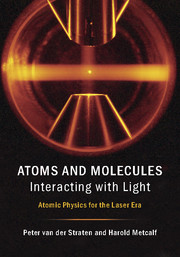Book contents
21 - Bose–Einstein condensation
from Part III - Applications
Published online by Cambridge University Press: 05 February 2016
Summary
Introduction
Bose–Einstein condensation (BEC) is one of the most intriguing phenomena in physics. The basic idea goes back to the 1920s, when Einstein made predictions for the behavior of atoms at sufficiently low temperatures and high densities. However, it took seven decades for experimental physicists to realize this phase under the low-density conditions envisioned by Einstein. In the intermediate period there were many experiments in which aspects of BEC played important roles. Therefore, phenomena such as superfluidity and superconductivity were connected to BEC long before its 1995 realization in ultra-cold, low-density atomic vapors. Since BEC can be discussed with very many different backgrounds and applications in mind, the subject can sometimes be overwhelming for interested students.
There is a very good reason why a chapter on BEC does not belong in this book. In all the other chapters here, the processes described involve one or at most two atoms, and the interactions that play a role are between the particles that constitute the atom, namely between the nucleus (or nuclei) and their electrons. The interactions are described quantum mechanically by their Hamiltonian that can always be written exactly in non-relativistic terms, and in some cases can even be solved exactly. This makes atoms and molecules a branch of physics where comparisons between theory and experiments become very meaningful since theoretical predictions are often confirmed to very high accuracy.
In BEC, it is the interactions among many atoms that are the key for understanding the phenomenon. Although in principle one could write a Hamiltonian for a Bose condensed gas, its large number of particles makes this not very practical. The starting point for the description of a BEC is in the area of many-body physics that belongs to the expertise of condensed-matter physicists. The interactions between ~1023 electrons in a solid state with a lattice formed by ~1023 ions resemble the kind of interactions in a BEC much more closely than the simple fewbody interactions in an atom or molecule. Thus all the theoretical models that have been described up to now are not applicable for the contents of this chapter.
- Type
- Chapter
- Information
- Atoms and Molecules Interacting with LightAtomic Physics for the Laser Era, pp. 382 - 412Publisher: Cambridge University PressPrint publication year: 2016



